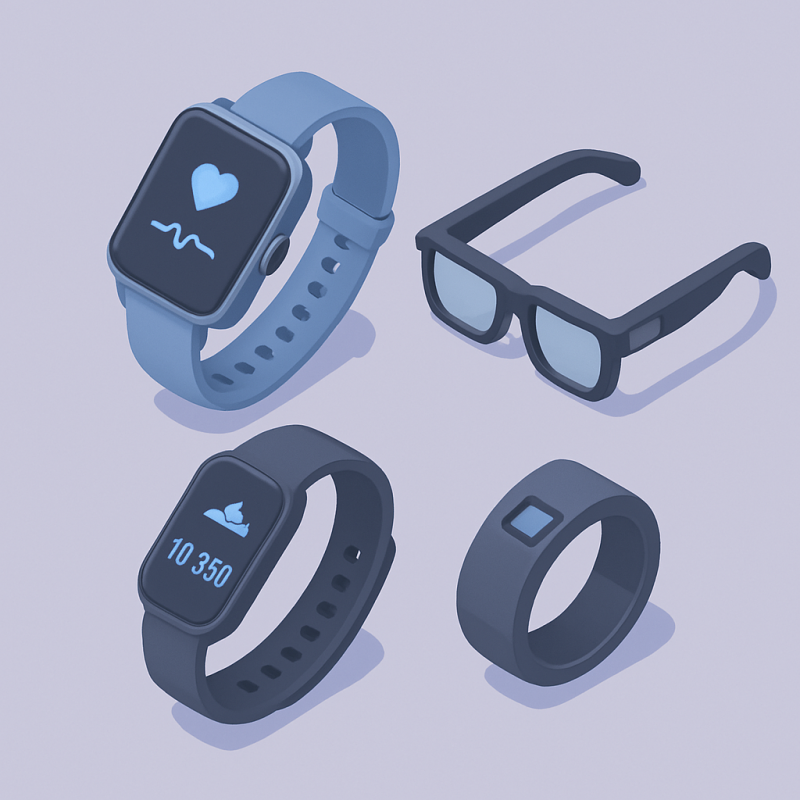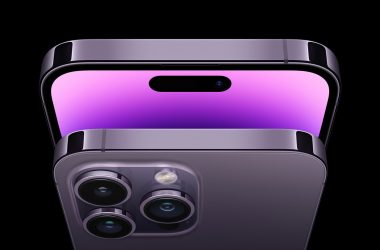Table of Contents Show
In the world of wearable technology, smartwatches and fitness bands have become increasingly popular. Both offer a range of features designed to enhance your daily life, but they cater to different needs and preferences. In this blog post, we’ll compare smartwatches and fitness bands to help you decide which one is the best fit for you.
Smartwatches: Features and Benefits
Smartwatches are versatile devices that offer a wide range of features beyond basic timekeeping. They often include fitness tracking capabilities, such as heart rate monitoring, step counting, and sleep tracking. Additionally, smartwatches provide smartphone notifications, allowing you to receive calls, texts, and app alerts directly on your wrist. Some models even support voice assistants, enabling you to control smart home devices or perform tasks with voice commands. With customizable watch faces and interchangeable bands, smartwatches offer a blend of functionality and style.
Popular Smartwatch Models
1. Apple Watch Series 7: Known for its sleek design and advanced features, the Apple Watch Series 7 offers fitness tracking, ECG monitoring, and a wide range of apps. It also supports cellular connectivity, allowing you to make calls and send texts without your phone.
2. Samsung Galaxy Watch 4: This smartwatch features a vibrant display, fitness tracking, and a rotating bezel for easy navigation. It runs on Wear OS, providing access to a variety of apps and Google services.
3. Garmin Venu 2: Designed for fitness enthusiasts, the Garmin Venu 2 offers advanced fitness tracking, GPS, and a long battery life. It also includes features like music storage and contactless payments.
Types of Smartwatches
1. Classic Smartwatches: These models resemble traditional watches but come with smart features like notifications, fitness tracking, and customizable watch faces. They are suitable for everyday wear and offer a balance between style and functionality.
2. Sports Smartwatches: Designed for athletes and fitness enthusiasts, these smartwatches offer advanced fitness tracking features such as GPS, heart rate monitoring, and workout tracking. They are often water-resistant and durable, making them ideal for outdoor activities.
3. Hybrid Smartwatches: These watches combine the appearance of a traditional watch with smart features like step counting and notifications. They are a great option for those who prefer a classic look with some smart functionality.
Fitness Bands: Features and Benefits
Types of Fitness Bands
1. Basic Fitness Bands: These bands offer essential fitness tracking features like step counting, sleep tracking, and basic activity monitoring. They are affordable and suitable for those who want to track their daily activity without additional features.
2. Advanced Fitness Bands: These bands include more advanced features like heart rate monitoring, GPS tracking, and workout tracking. They are ideal for fitness enthusiasts who want more detailed insights into their workouts and overall health.
3. Fashion Fitness Bands: These bands combine fitness tracking with stylish designs, making them suitable for everyday wear. They often come with interchangeable bands and customizable displays, allowing users to match their bands with their outfits.
Fitness bands, also known as activity trackers, are designed primarily for health and fitness tracking. They typically offer features such as step counting, heart rate monitoring, and sleep tracking. Fitness bands are often more lightweight and compact than smartwatches, making them comfortable to wear during workouts and throughout the day. They usually have longer battery life due to their simpler displays and limited functionality. Fitness bands are ideal for individuals who prioritize fitness tracking and prefer a more minimalist design.
Key Differences
1. Functionality: Smartwatches offer a broader range of features, including smartphone notifications, voice assistants, and customizable watch faces. Fitness bands focus primarily on fitness tracking and may have limited additional features.
2. Design: Smartwatches often have larger displays and a more stylish design, while fitness bands are typically more compact and lightweight.
3. Battery Life: Fitness bands generally have longer battery life due to their simpler displays and limited functionality. Smartwatches may require more frequent charging.
4. Price: Fitness bands are usually more affordable than smartwatches, making them a budget-friendly option for those primarily interested in fitness tracking.
Ultimately, the choice between a smartwatch and a fitness band depends on your personal preferences and lifestyle. If you value a wide range of features and want a device that can serve as an extension of your smartphone, a smartwatch may be the better choice. On the other hand, if your primary focus is on fitness tracking and you prefer a more minimalist design, a fitness band may be the ideal option. Consider your needs and budget to make an informed decision that suits your lifestyle.
Popular Fitness Band Models
1. Fitbit Charge 5: This fitness band offers advanced health and fitness tracking features, including heart rate monitoring, sleep tracking, and stress management tools. It also includes built-in GPS and a vibrant AMOLED display.
2. Xiaomi Mi Band 6: Known for its affordability and extensive features, the Xiaomi Mi Band 6 offers heart rate monitoring, sleep tracking, and a large AMOLED display. It also supports various fitness modes and has a long battery life.
3. Garmin Vivosmart 4: This fitness band focuses on health and wellness, offering features like pulse oximetry, stress tracking, and body battery energy monitoring. It also includes fitness tracking and a slim, stylish design.
Choosing the Right Device
1. Lifestyle: Consider your daily activities and how you plan to use the device. If you need a device for fitness tracking and occasional notifications, a fitness band may suffice. If you want a device that can handle a variety of tasks, including notifications, apps, and fitness tracking, a smartwatch may be more suitable.
2. Budget: Smartwatches tend to be more expensive than fitness bands. Determine your budget and choose a device that offers the features you need within your price range.
3. Specific Needs: Think about the specific features you need, such as GPS, heart rate monitoring, or sleep tracking. Choose a device that offers the features that are most important to you.
4. Compatibility: Ensure the device is compatible with your smartphone and other devices you use. Check for compatibility with your operating system and any specific apps you plan to use.
Maximizing the Use of Your Device
1. Set Fitness Goals: Use your device to set and track fitness goals, such as daily step counts, workout sessions, or sleep targets. This will help you stay motivated and monitor your progress over time.
2. Use Health Apps: Take advantage of health and fitness apps that integrate with your device. These apps can provide additional insights, personalized recommendations, and challenges to keep you engaged.
3. Customize Settings: Customize your device’s settings to suit your preferences. This includes choosing watch faces, setting notification preferences, and adjusting fitness tracking settings.
4. Explore Additional Features: Explore the additional features your device offers, such as contactless payments, music storage, or voice assistants. These features can enhance your overall experience and make your device more versatile.
The History and Evolution of Smartwatches
1. Early Beginnings: The concept of a smartwatch dates back to the 1970s, with the introduction of digital watches that featured basic functions like calculators and calendars. These early devices laid the foundation for the development of more advanced smartwatches.
2. The Rise of Smartwatches: The modern smartwatch era began in the early 2010s, with the launch of devices like the Pebble and Samsung Galaxy Gear. These watches offered features like notifications, fitness tracking, and app integration, paving the way for the smartwatch market to grow.
3. Technological Advancements: Over the years, smartwatches have become more sophisticated, with advancements in display technology, battery life, and health monitoring capabilities. Companies like Apple, Samsung, and Garmin have continued to innovate, introducing features like ECG monitoring, GPS tracking, and cellular connectivity.
4. Impact on Consumers: Smartwatches have become an integral part of many people’s lives,
Benefits and Drawbacks of Smartwatches
Benefits:
1. Convenience: Smartwatches offer quick access to notifications, calls, and messages, allowing users to stay connected without constantly checking their smartphones.
2. Health and Fitness Tracking: They provide comprehensive health and fitness tracking features, such as heart rate monitoring, sleep tracking, and workout tracking, helping users maintain a healthy lifestyle.
3. Versatility: Smartwatches come with a wide range of features, including GPS, music storage, and contactless payments, making them versatile devices for everyday use.
4. Customization: Users can personalize their smartwatches with different watch faces, bands, and apps, tailoring the device to their preferences.
Drawbacks:
1. Battery Life: Smartwatches often have limited battery life, requiring frequent charging, which can be inconvenient for users.
2. Cost: High-end smartwatches can be expensive, making them less accessible to some consumers.
3. Dependency on Smartphones: Many smartwatches rely on a smartphone connection for full functionality, limiting their standalone capabilities.
4. Limited Screen Size: The small screen size can make it challenging to view content and interact with apps compared to smartphones.
The History and Evolution of Fitness Bands
1. Early Fitness Trackers: The concept of fitness bands began with simple pedometers and step counters. These early devices helped users track their daily activity and set basic fitness goals.
2. The Introduction of Fitness Bands: The modern fitness band era began in the early 2010s, with the launch of devices like the Fitbit Flex and Jawbone UP. These bands offered features like step counting, sleep tracking, and basic activity monitoring, making them popular among fitness enthusiasts.
3. Advancements in Technology: Over time, fitness bands have evolved to include more advanced features like heart rate monitoring, GPS tracking, and smartphone notifications. Companies like Fitbit, Garmin, and Xiaomi have continued to innovate, introducing new models with improved functionality and design.
4. Impact on Health and Wellness: Fitness bands have had a significant impact on health and wellness, encouraging users to stay active and monitor their daily activity. They have also become an essential tool for tracking fitness progress and setting personalized health goals.
Benefits and Drawbacks of Fitness Bands
Benefits:
1. Affordability: Fitness bands are generally more affordable than smartwatches, making them accessible to a wider range of consumers.
2. Simplicity: They offer a straightforward and user-friendly experience, focusing on essential fitness tracking features without the complexity of additional apps and functions.
3. Long Battery Life: Fitness bands typically have longer battery life compared to smartwatches, reducing the need for frequent charging.
4. Lightweight and Comfortable: Fitness bands are often lightweight and comfortable to wear, making them ideal for all-day use and workouts.
Drawbacks:
1. Limited Features: Fitness bands have fewer features compared to smartwatches, which may limit their functionality for users who want more advanced capabilities.
2. Smaller Display: The smaller display size can make it challenging to view detailed information and interact with the device.
3. Less Customization: Fitness bands offer fewer customization options, such as watch faces and apps, compared to smartwatches.
4. Dependency on Smartphones: Some fitness bands rely on a smartphone connection for GPS tracking and other features, limiting their standalone capabilities.
Future Trends and Innovations in Wearable Technology
1. Enhanced Health Monitoring: Future wearables are expected to offer more advanced health monitoring features, such as continuous glucose monitoring, blood pressure tracking, and even early disease detection.
2. Improved Battery Life: Advances in battery technology may lead to longer-lasting wearables, reducing the need for frequent charging and enhancing user convenience.
3. Integration with Smart Home Devices: Wearables may become more integrated with smart home ecosystems, allowing users to control home appliances and devices directly from their wrist.
4. Augmented Reality (AR) Integration: The integration of AR technology into wearables could open up new possibilities for immersive experiences, such as navigation, gaming, and remote assistance.
5. Personalized Coaching and Insights: Wearables may offer more personalized coaching and insights based on user data, helping individuals achieve their fitness and health goals more effectively.
The Impact of Wearable Technology on Daily Life
1. Health and Fitness: Wearable devices have revolutionized health and fitness by providing real-time data on physical activity, heart rate, sleep patterns, and more. They empower individuals to make informed decisions about their health and well-being.
2. Communication: Smartwatches and fitness bands enable users to receive notifications, messages, and calls directly on their wrist, enhancing communication and reducing the need to constantly check smartphones.
3. Productivity: Wearables can improve productivity by offering reminders, calendar alerts, and task management features, helping users stay organized and focused.
4. Safety and Security: Some wearables include safety features such as SOS alerts and fall detection, providing an added layer of security for users, especially the elderly or those with medical conditions.
5. Personalization: Wearable technology allows for a high degree of personalization, with customizable watch faces, bands, and apps, enabling users to tailor their devices to their preferences and lifestyles.
Role of Wearable Technology in the Workplace
1. Productivity Enhancement: Wearables like smartwatches and fitness bands can help employees manage their time more effectively, set reminders, and track their progress on tasks, leading to increased productivity.
2. Health and Wellness Programs: Employers are increasingly using wearables to promote health and wellness among employees, offering incentives for meeting fitness goals and providing insights into overall well-being.
3. Safety Monitoring: In industries like construction and manufacturing, wearables can be used to monitor employee safety, track vital signs, and detect potential hazards, reducing the risk of accidents.
4. Remote Collaboration: Wearables with communication capabilities enable remote workers to stay connected with their teams, participate in virtual meetings, and access important information on the go.
5. Employee Engagement: Wearables can be used to gamify work tasks, offering rewards and recognition for achieving goals, which can boost employee engagement and motivation.









